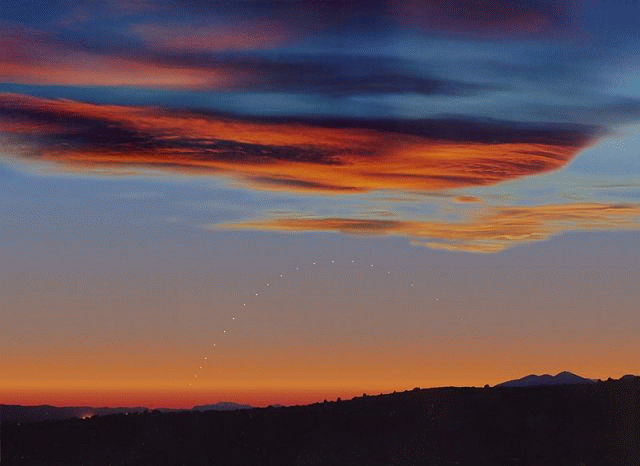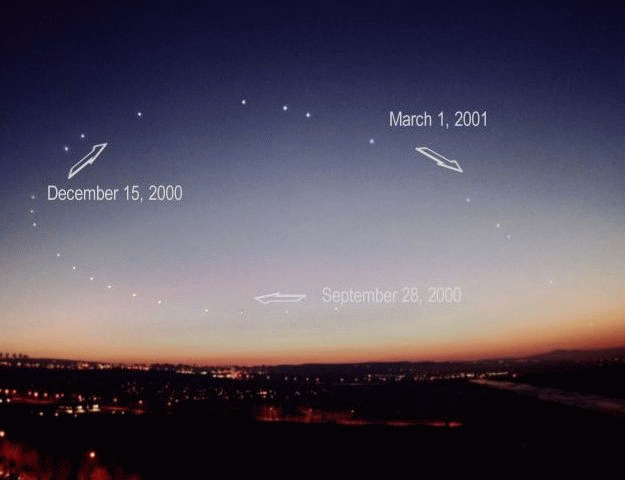Elongation

To make a good model of the solar system required good observations. Good observations require a good way to talk about them. Planets were referred to their position in two ways. The first was the location of the planet with respect to the stars. For example, the planet could be said to be in the constellation Sagittarius. Because the planets tended to move slower than the stars, which constellation a planet was next to would change with time, much as the sun did.
The next way to talk about the planets was its position with respect to the sun. The angle between the sun and the planet is called elongation.
Venus and Mercury were always seen near the sun, either right before sunrise or right after sunset. Indeed, it took awhile for the ancient Greeks to realize these morning and evening stars were the same planet. Another way of saying that Mercury and Venus were always near the sun is that their elongations are small. The largest value it would reach is called the greatest elongation. It is during greatest elongation that they would be easiest to see. The greatest elongation of Mercury is about 28°.

Venus is easier to observe than Mercury because it has a larger greatest elongation, about 48°.

When Mercury and Venus have an elongation of 0° they are said to be in conjunction – superior conjunction if the sun is in front of the planet and inferior conjunction if the planet is in front of the sun.
These planets could be seen far from the sun. Specifically, when the sun was on the opposite of the earth than the planet, or at an elongation of 180° the planet was said to be at opposition. When the planet was aligned with the sun (elongation of 0°) it was in conjunction. When the elongation was 90° it was said to be in quadrature.
It was during opposition that these three planets tended to undergo retrograde motion. Mars had the most dramatic and difficult to model retrograde.
